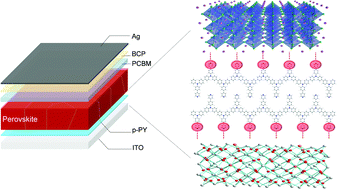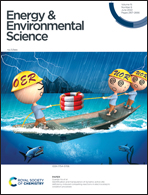Robust hole transport material with interface anchors enhances the efficiency and stability of inverted formamidinium–cesium perovskite solar cells with a certified efficiency of 22.3%†
Abstract
Perovskite solar cells (PSCs) require both high efficiency and reliable long-term stability for commercialization. As important as the perovskite layer, charge transport layers and their contact with the adjacent perovskite layer also play crucial roles in the efficiency and stability of PSCs. Herein, we report the use of pyridine anchoring group functionalized poly(triarylamine) (p-PY) as the hole transport layer at buried interfaces between the conductive oxide substrate and formamidinium-cesium perovskite layer to enhance the efficiency and stability of inverted PSCs. The p-PY based device exhibited a record efficiency of 22.8% (certified efficiency of 22.3%) and maintained 97.5% of the initial efficiency after operation under 1 sun equivalent white-light light-emitting diode array illumination with maximum power point tracking at 45 °C for 1000 h, and 94% and 81% of the initial efficiencies after harsh thermal aging at 85 °C for 500 h and at 120 °C for 200 h, respectively.



 Please wait while we load your content...
Please wait while we load your content...